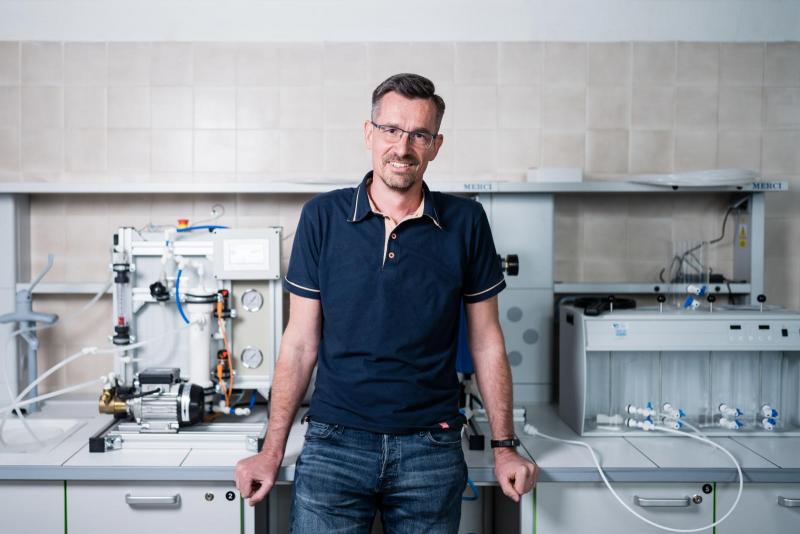Topic
Microplastics in drinking water will increase

Tiny particles from tyres, clothing and other plastic products are now found in the air, food and water. Researchers from the Institute of Municipal Water Management at FCE BUT are focusing on water. They aim to develop better filtration technologies that will allow more effective removal of microplastics from drinking water.
Microplastics broadly refer to particles of any type of plastic smaller than 5 millimetres. They can vary in shape, from spheres to fibres to miscellaneous fragments. Primary microplastics come mostly from cosmetic products, while secondary microplastics result from breakdown of plastic products, such as PET bottles, plastic bags and clothing, due to sunlight exposure or mechanical action.
"A classic example is tyres, which wear down by friction when driving. This generates micro particles that are dispersed over the road surface. When it rains, the rain washes them into the sewer or directly into waterways," explains Tomáš Kučera, head of the Institute of Municipal Water Management at FCE BUT, describing one of the ways microplastics enter the water cycle. Polyester clothing washing is also the culprit. It releases tiny fibres that end up in wastewater. The industrial sector is the largest producer of microplastics, which is why their concentration in water sources is often highest around large cities.
Although current water treatment plants can capture microplastics in drinking water, it happens inadvertently during standard water treatment using existing technologies. "We use technologies that remove organic substances, dissolved iron or pesticides, which can effectively separate microplastics as well. At various technological stages, we can capture 60–90% of them, which is decent. There are various pollutants where the efficiency is even lower," points out Kučera, adding that there is no reason to stop drinking tap water.
Studies show that tiny plastic particles have been appearing practically all over the world in recent years. They are found in oceans, waterways and in the bodies of animals, such as fish. "Asia and Africa are the worst off geographically, where they handle plastic more leniently. Compared to these continents, Europe is still doing well," he adds. The effects of microplastics on human health are not yet well explored. However, a recent study by the Vrije Universiteit in Amsterdam revealed that microplastics can travel through the human body and appear in the blood.
According to Kučera, it is impossible to avoid microplastics in everyday life, even by changing habits. "You can stop drinking tap water and, for a good feeling, prefer deep spring water from glass bottles. However, you will still be exposed to microplastics in other ways," he says. "They are very light particles that spread easily in the air. They can even be ingested or inhaled – for example, when you pull a polyester sweater over your head, releasing tiny fibres."
He considers it equally unrealistic that plastic microparticles will disappear from the environment in the foreseeable future: "Even if humanity stopped using plastics today, it would take hundreds of years to completely eliminate the existing ones already in nature. In the coming years, the amount of microplastics in water sources will increase and we need to prepare for that."
He believes that the most effective solution is research and development of new mechanisms that allow the most efficient treatment of water. Researchers at the Institute of Municipal Water Management therefore aim to improve existing water treatment technologies – clarification and subsequent separation by filtration, including the use of membranes. The goal is to remove the widest possible spectrum of microplastics from water with an efficiency of 95% or more. Finding the right solution, however, will probably not be easy, as microplastics encompass a very wide range of substances of different sizes and materials.
Kučera considers the occurrence of microplastics in water sources a significant problem, but not an unsurmountable one. "The water industry has had to deal with a range of new pollutants throughout its history – from cholera to pesticides, for which new technologies had to be developed and dealt with. We see it as a challenge to come up with a good solution," he concludes.
(mar)
BUT experts address climate challenges, floods, and the future of Czech water
Soil erosion will be prevented by strip crop rotation technology
Green facades improve the air and lower the temperature in hot cities
FCE researchers' timeless natural wastewater is one of the best construction in the region
Water losses in the Czech Republic reach 15 percent, the situation is getting better every year